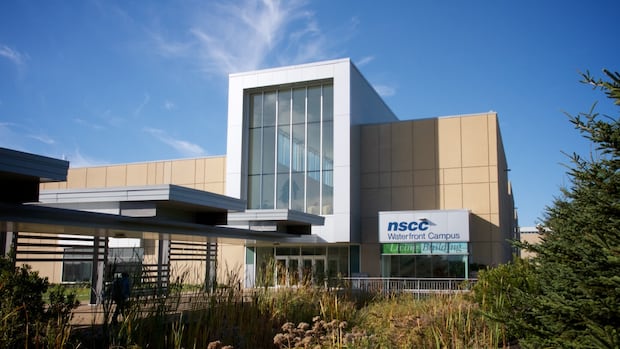Nova Scotia’s population is suddenly booming. Can the province handle it?

This story is part of an ongoing CBC Nova Scotia series examining how the province is managing its record-setting population boom after decades of limited growth.
Kim Fry and her family had been thinking about moving away from Toronto for years. When the COVID-19 pandemic hit, it clarified some of their long-term priorities and they finally decided to make the leap.
But first, they had to figure out where to go.
Nova Scotia ranked high on their list of possibilities.
They have family here, they were impressed with the province’s COVID-19 response and felt the pace of life was more in line with what they were looking for.
But it was the perceived affordability of Nova Scotia that really helped swing their decision in the province’s favour.
“We didn’t own a home in Toronto and that was never going to be a possibility for us,” Fry says. “When we first started imagining that we were going to move to Nova Scotia, I think we thought we would be able to afford to buy something.
“That quickly evaporated as we saw that we were not the only people who had this idea.”
Indeed, they were far from alone. Nova Scotia’s population has surged in the past few years, driven largely by immigration and people moving here from other provinces.
The shift has been relatively sudden and somewhat surprising after about two decades of stagnant or even decreasing population figures and dire warnings about the province being on the brink of an extended period of decline.
Since 2015, Nova Scotia has added nearly 111,000 new residents — or more than 10 per cent of the current population, which as of April 1, 2023, was 1,047,232. Growth over the past year has been the fastest on record since 1951.

The boom has resulted in benefits, such as greater diversity, economic growth and stronger rural communities, but it has also posed challenges.
An already overburdened health-care system has become even more stressed. An education system that was once shuttering schools due to declining enrolment is now seeing some schools bursting at the seams, with portables and modulars spilling into parking lots. And more Nova Scotians are struggling to find housing they can afford, both within the rental and ownership markets.
Growth brings challenges
For Fry, her partner and their six-year-old child, their 2021 move to Halifax has been overwhelmingly positive. However, Fry has also learned that living in Nova Scotia comes with its share of hurdles.
“I’d say my rose-coloured glasses lost a bit of the tint,” Fry says.
Like many others, she does not have a family doctor, and says accessing walk-in clinics is difficult. As of July 1, 152,001 Nova Scotians were on the wait-list for a family doctor, with 34 per cent saying they need a doctor because they were new to the area.
Fry says protection for tenants is weak, and regional transportation outside Halifax is also inadequate.
“Even though affordability is a big motivation for people moving here, I feel like Nova Scotia is having some growing pains around how to properly deal with that huge growth.”
Immigration
That growth began in mid-2015, when the Nova Scotia government made a big push for increased immigration. A new immigration stream was launched that spring for international students who had already worked in the province for one year.
Later that year, the federal government allowed Nova Scotia to bring in more highly skilled immigrants under its express entry stream, and nearly doubled the number of immigrants permitted under the provincial nominee program from 700 to 1,350.
The number of applicants Nova Scotia is allowed to accept under the provincial nominee program has steadily grown since then, with an allocation of 3,570 this year. Last year, the province exceeded its allocation of 2,700, approving 3,829 applications.

The Atlantic Immigration Pilot Program, created in 2017 and made permanent in 2022, has also bumped up the province’s population, as has the arrival of 3,045 refugees from Syria since 2015 and 3,818 refugees from Ukraine since the Russian invasion of that country on Feb. 24, 2022.
The efforts have paid off, with the province welcoming 13,816 immigrants in the year ending July 1, 2022, primarily from India, China, Philippines, Nigeria and Syria.
Interprovincial migration
In addition to immigration, people moving to Nova Scotia from other parts of Canada — particularly Ontario — account for much of the province’s growth in recent years.
From January to March this year alone, 3,843 people moved to Nova Scotia from Ontario, continuing a trend that began during the first year of the COVID-19 pandemic and hasn’t slowed down.
In the one-year period ending June 30, 2022, 27,640 people migrated to Nova Scotia from elsewhere in Canada. Once the number of people who left Nova Scotia for other parts of the country is considered, Nova Scotia still gained 14,079 people.

Although the province does not collect data on what motivates people to move here, Fred Bergman, an analyst with the Atlantic Provinces Economic Council, says anecdotally, he’s heard of several reasons.
The perception that Nova Scotia was safer during the early days of COVID-19 may have prompted some to move, he says. The ability of many to work from home was also likely a factor — one that was facilitated by the increasing availability of rural broadband internet, Bergman says.
The lower cost of housing also contributed to the lure of the province, he says, as retirees elsewhere sold their homes and found cheaper ones here, or others sought to enter the comparatively more affordable housing market in Nova Scotia.
As more Canadians move to Nova Scotia from other provinces and immigration ramps up, the population has boomed in the last few years. The changes have brought benefits, but challenges, too. The CBC’s Frances Willick takes a look at some of the numbers.
Real estate market hopping
Umme Sardar has seen the effects of both immigration and interprovincial migration on the province and her industry.
The real estate agent, who is of South Asian descent, says when her daughter moved to Nova Scotia in 2012, “I would smile if I saw another brown person, simply because we shared the same skin colour.”
“Now, I would never stop smiling if I had to do that. That’s an indication of population growth,” she says.

Sardar says “a good percentage” of her clients are from out of province or out of the country, and recently many have been repeat customers who knew her from her days as a real estate agent in Toronto and Qatar.
Right now, the market is still hot in Nova Scotia, though it has calmed slightly since earlier in the COVID-19 pandemic, when real estate agents were selling properties their clients had only seen online, and almost every home sold above asking — with multiple offers.
Sardar says she’s heard of one property that had 60 offers, and she has been involved in transactions that saw more than 20 offers.

One home stands out in her mind as being indicative of the strong demand in the real estate market — a 1,200 square-foot lakefront bungalow on a slab that sold for 60 per cent above the list price — a high price, Sardar says, given the size of the home.
“I mean, that just blew my mind,” she said.
Rural areas growing
Although the Halifax region has absorbed most of the province’s newcomers, the population boom has spread far beyond the capital.
Rural areas that had been losing residents, such as Yarmouth and Digby counties, are now seeing an uptick in population for the first time in over two decades.
The most recent figures, for the one-year period ending July 1, 2022, show that outside Halifax, which saw its population increase by 4.5 per cent, Annapolis County leads the pack in growth, with a 2.79 per cent increase.

“It’s truly remarkable,” says Alex Morrison, the county’s warden. “I wouldn’t go so far as to say that Annapolis County is entirely a bucolic place, but it is a place that is attractive. We have a different approach. I think it’s a more relaxed approach to life.”
Morrison says the growth is visible in the many Ukrainian refugees that now call the county home, and in the increasing number of young children.
“To see the children from the preschool classes, the long line when they cross the road, we didn’t see that five or 10 years ago.”

The population shift has brought with it new attitudes and more open-mindedness among residents, Morrison says.
“We have new people whose life experiences have been radically different than ours. And so for those of us who have been here for decades or a long time, it gives us an insight into how people lived in other parts of the world, and now they’re with us and we want to learn about them. So we are one united community.”
Aiming for 2 million
On the heels of the province reaching the one-million population milestone in late 2021, the Nova Scotia government has set an ambitious goal to hit two million by 2060, saying continued growth will bring in more tax revenue, new businesses and jobs, improved infrastructure and greater diversity.
The number of deaths each year in Nova Scotia still outpaces the number of births, and that trend isn’t expected to change any time soon, says Bergman.

Nova Scotia still has a significant population of seniors, and that is expected to grow until around 2040, when the proportion of seniors that resulted from the baby boom after the Second World War wanes.
So, the province can’t rely on natural population change to reach its targets; instead, Nova Scotia must look to immigration and interprovincial migration for continued growth.
Many of the immigrants arriving in Nova Scotia are a younger demographic, and that has already started to bring down the province’s median age, which fell marginally from 44.9 years in 2021 to 44.2 last year. That may not seem like a big change, but the Finance Department’s director of statistics, Thomas Storring, says it’s been decades since Nova Scotia has seen such a substantial drop.

Both the federal and provincial governments have signalled they want to increase immigration targets, but Bergman says for Nova Scotia, the key will be keeping newcomers here. Over the past six years, the province’s retention rate has been 70 per cent.
“If they can’t find housing and they can’t find a job, there’s not people there that speak the same language as them or have similar cultural background, they might opt to leave,” Bergman says. “At the end of the day, it’s important not only to attract those immigrants but also to retain them.”
The province’s current projections are that Nova Scotia’s population will surpass 1,150,000 by 2030.
“The big question mark is, will we be able to sustain that rapid pace of growth or not going forward?” Bergman says. “That’s always the $1-million question.”




